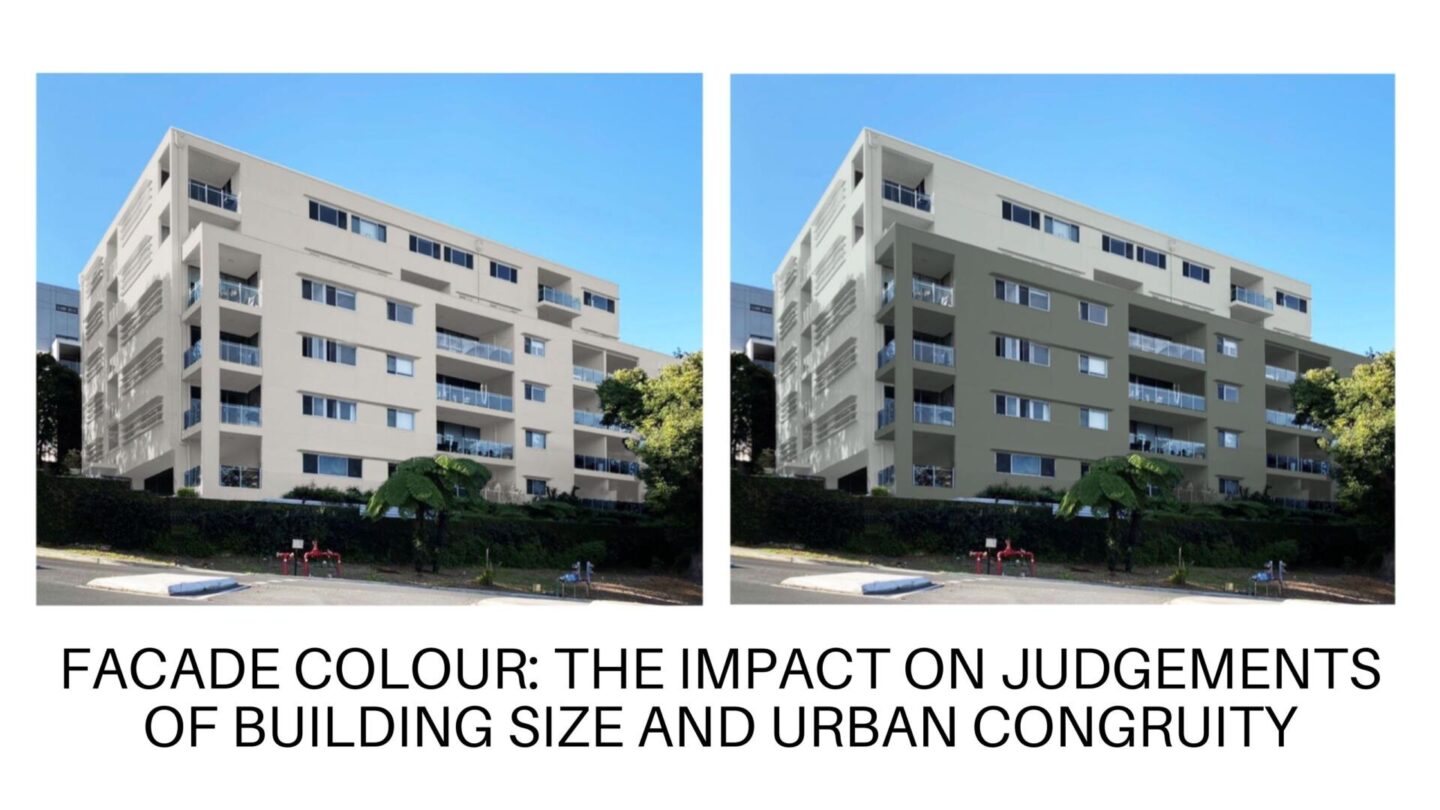Aside from improving aesthetics, building façade colour schemes can impact the perceived size of a building as well as how the building complements (or contrasts with) it’s urban environment.
The image featured in this post is a building in Lane Cove. I was recently commissioned to provide evidence-based façade colour options for this building. In this context, evidence-based façade colour options relate specifically to colour options underpinned by academic research relating to colour in the urban environment. That is, colour options that enhance visual amenity and congruity, as well as improve environmental aesthetics.
I have completed numerous façade colour consultancy projects and published a number of peer-reviewed academic papers on this topic. My PhD research investigated variations of façade colour and specifically focused on cognitive perceptions and affective appraisals. The findings indicated that building façade colour has the capacity to influence judgements about building size, visual amenity and congruity. Specific details can be found in the following publications:
O’Connor, Z. (2011). Façade colour and judgements about building size and congruity. Journal of Urban Design, 16 (3), 397-404. (ERA Journal Rank A*). Accessible via this link.
O’Connor, Z. (2009). Façade colour and judgements about building size. In D. Smith, P. Green-Armytage, M.A. Pope & N. Harkness (Eds.) AIC 2009: 11th Congress of the International Colour Association (CD-Rom), Sydney: AIC.
O’Connor, Z. (2008). Façade colour and aesthetic response: Examining patterns of response within the context of urban design and planning policy in Sydney. PhD thesis, Faculty of Architecture, Design and Planning, University of Sydney. Accessible via this link.
